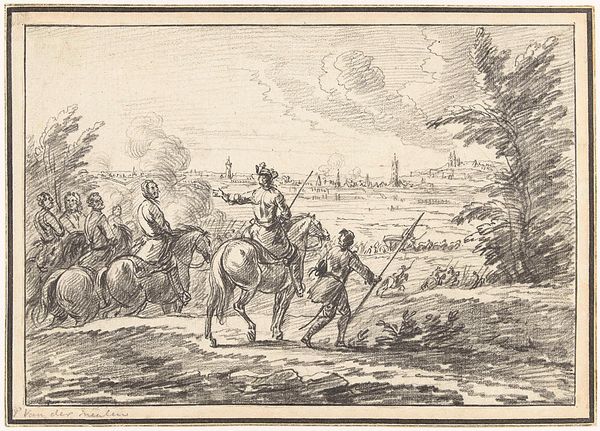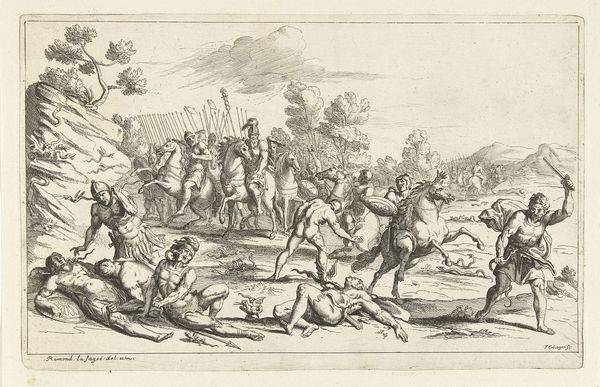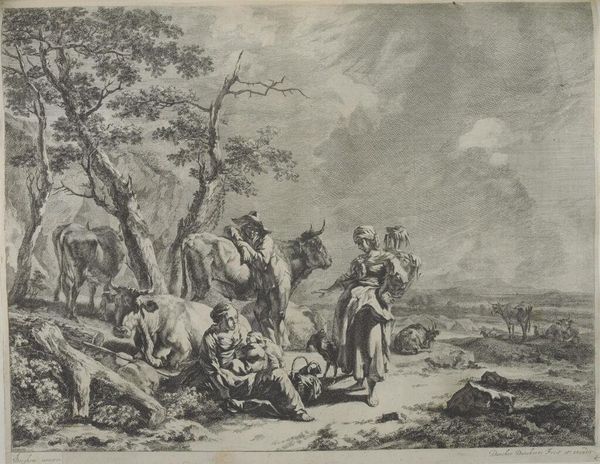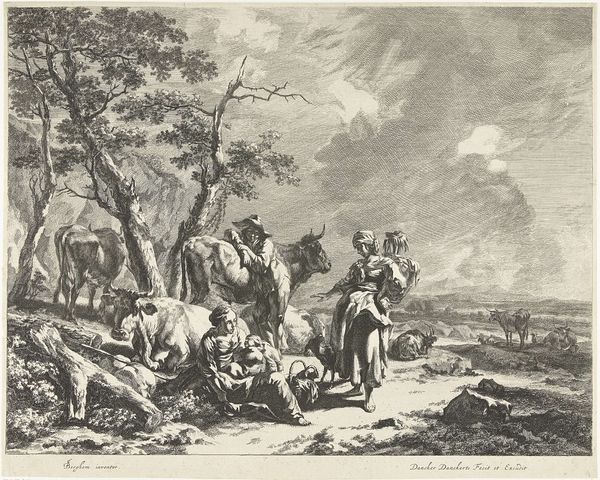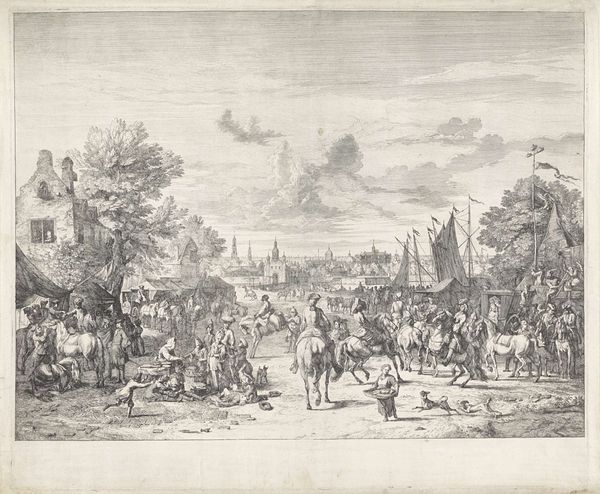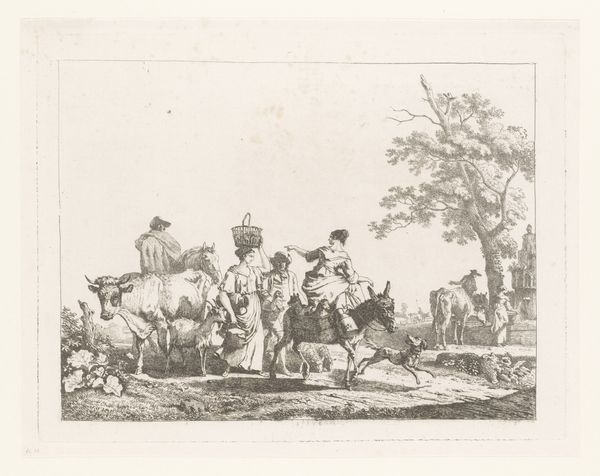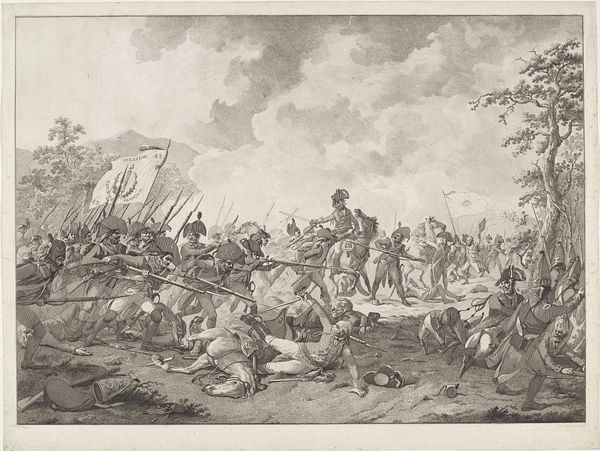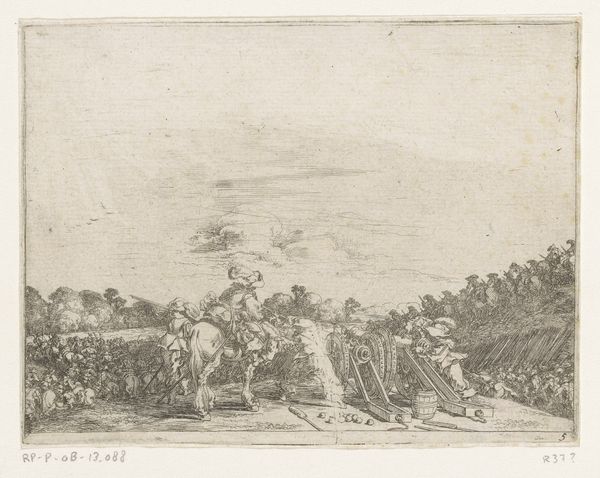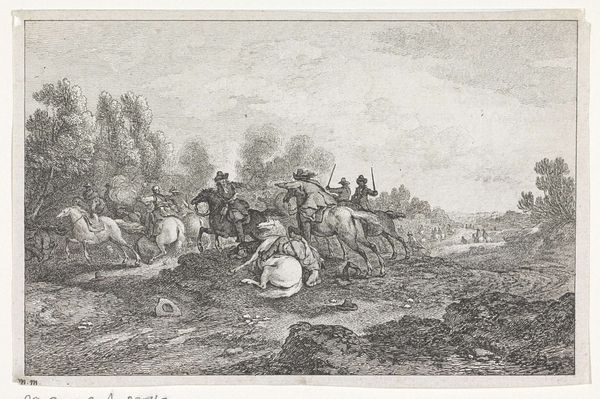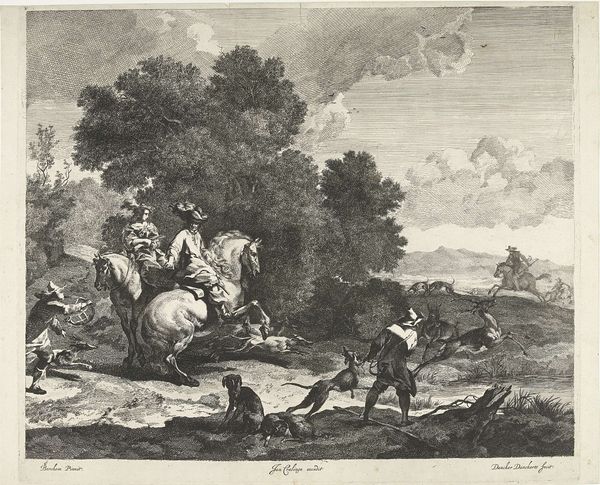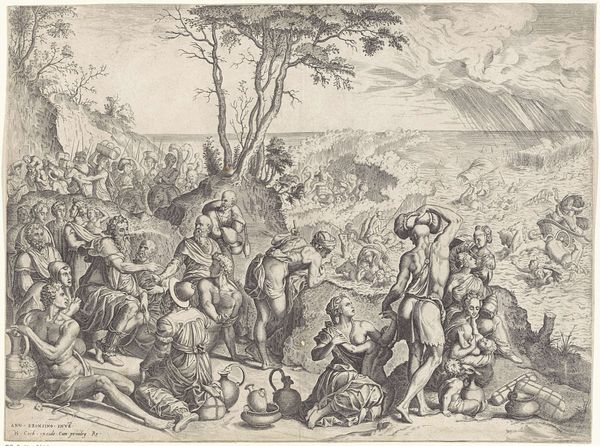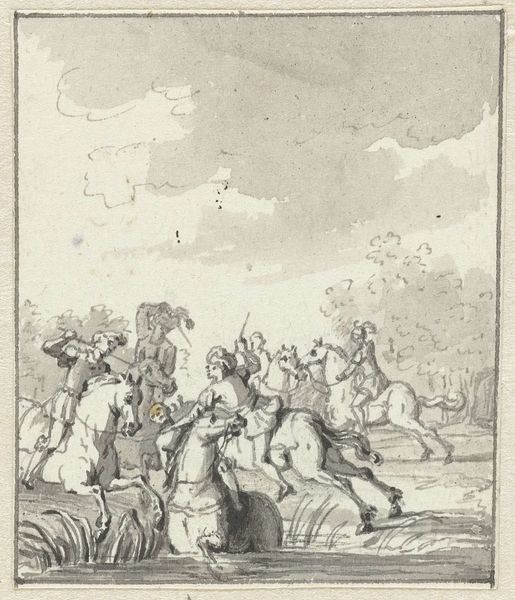
print, etching
#
baroque
# print
#
etching
#
landscape
#
history-painting
Dimensions: height 255 mm, width 325 mm
Copyright: Rijks Museum: Open Domain
Editor: So, here we have Pieter Nolpe's "Slag bij Borgerhout," or "Battle of Borgerhout," from 1643. It's an etching, and looking at it, the first thing that strikes me is how busy it is! The detail is incredible, especially considering the medium. How would you interpret this work? Curator: As a materialist, I see this etching as more than just a depiction of a battle. Consider the socio-economic context: printmaking in the 17th century was a burgeoning industry. It democratized images, making historical events accessible to a wider audience, not just the wealthy elite. The etching process itself, the labour involved, the dissemination of the final product – that’s where the real story lies. How does the material production shape our understanding of the historical narrative? Editor: That's interesting. I was focusing on the composition – the chaos of battle versus the serene landscape in the background. Curator: Precisely, but let’s push further. The material, the etching, inherently limits the level of detail. How does that affect the portrayal of the battle? Is Nolpe glorifying the event or offering a more nuanced perspective shaped by the constraints of his craft? What’s the role of the printmaker as a producer of historical narratives, and how are they implicated in that process? Editor: So, the very act of creating the print becomes part of the historical document itself? Curator: Exactly! The labour, the cost of materials, the distribution networks - all influence what stories get told and how they are told. It challenges the traditional view of the artist as simply a detached observer, placing them firmly within the social and economic structures of their time. Editor: I never thought about it that way. I was so caught up in the historical aspect that I missed the materiality of the work entirely. Thanks! Curator: My pleasure. Examining the material conditions of art production opens up entirely new avenues for understanding history and culture.
Comments
No comments
Be the first to comment and join the conversation on the ultimate creative platform.
